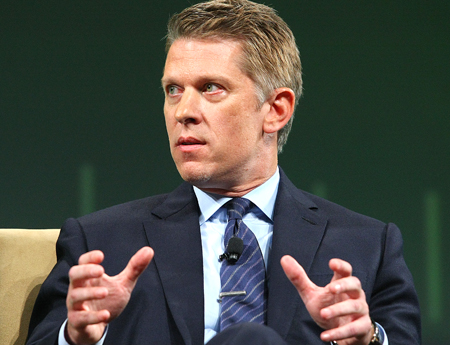TV Industry Focuses On Disruption From Digital

In 2015, the TV industry will see if several scary trends turn out to be blips on the radar or signs of the digital disruption that crippled the print and music businesses.
Ratings have dropped sharply for broadcast and cable nets, leaving execs scrambling for an explanation. After years of persuading advertisers to pay higher prices for fewer viewers, the ad market turned chilly and several of the large programmers reported declines in domestic ad revenue during the third quarter. Where’d the money go? To digital media, of course.
The situation stunned Wall Street. To placate analysts and keep repurchasing their own shares, some media companies instituted staff cuts, another sign of an industry facing at least temporary distress.
In the meantime, revenue from distributors grew reliably. In showdowns between programmers and distributors, the distributor got run over.
But it is unclear how much longer those distributor geese can continue laying golden eggs. As cable and satellite subscriptions rose in price, Nielsen saw more homes with broadband and no cable. Also, more homes pulled the plug on cable to become consumers of over-the-air broadcasting only. Companies including Dish, Sony, HBO and CBS were lining up to offer subscriptions to over-the-top services, which promise fewer channels at a lower price but better high-tech ways for consumers to find the entertainment for which they’re paying.
On advertising, an early alarm was sounded by analyst Michael Nathanson of MoffettNathanson Research. “Adding up all the national TV advertising results from 3Q 2014, it is clear that trends continue to deteriorate as we move from flat in 2Q to negative territory with a decline of 0.5%, again the worst quarter in advertising growth (after adjusting for Olympics comparisons) since the recession,” Nathanson said in a research note.
Broadcasting & Cable Newsletter
The smarter way to stay on top of broadcasting and cable industry. Sign up below
He pointed to several factors contributing to the weak ad results, including measurement issues that were leading to “shockingly bad ratings.” Another big factor is that “the shift to digital platforms is taking share out of TV budgets,” Nathanson said. “In the end, it comes back to the fact that in a business of supply and demand, there still is not enough volume demand to drive any growth.”
Networks are trying to recapture those dollars by dipping toes into programmatic buying and by increasing the amount of data and analytics they can offer marketers to help target advertising.
Shortfall Caused by Streaming
One important cause of the ratings weakness was Netflix and the other streaming services. Once seen as the enemy by the traditional TV business, Netflix became a business partner. TV programmers accepted billions from Netflix in exchange for programming, and then watched audience shift their viewing to streaming.
“Four months of declines, including October when the fall TV season is fully in swing, coupled with the evidence of the growth of [satellite video-on-demand] consumption is enough for us to conclude something has systemically changed,” said Todd Juenger, Sanford C. Bernstein analyst. “The content companies, however, are still in denial—in fact, they’re intent on selling more content to SVOD to make up for advertising shortfalls, which only accelerates the cycle.”
Another way the content companies reacted to the tough new business climate is by cutting costs and cutting staff. After turning down an $80 billion takeover bid by Rupert Murdoch’s 21st Century Fox, Time Warner moved to boost profits by restructuring its units, resulting in big job losses.
“We need to prioritize programming, monetization and innovation investment while reducing spending in less-impactful areas,” said John Martin, CEO of Time Warner’s Turner Broadcasting unit way back in June. “This may mean staff changes. In fact, I’ll be surprised if it doesn’t.”
Later in the year, Turner Broadcasting eliminated nearly 1,500 positions, Warner Bros. cut about 1,000 and HBO laid off 150.
Time Warner was not alone. Scripps Networks Interactive and AMC Networks had across-the-board reductions in staff, while Fox Networks Group and Discovery Communications restructured and cut their ad sales groups.
The forecasts for 2015 are not particularly encouraging. Most of the big media agencies have lowered their expectations for television spending in the U.S. Even the normally bullish David Poltrack of CBS in December acknowledged that, “the advertising market never gained any momentum in 2014,” and, “it looks like we will continue to experience a stable, but not growing, television advertising market through the first half of 2015.” He said there was a 50% chance that there could be some positive movement in advertising investment in the second half of the year.
Jon has been business editor of Broadcasting+Cable since 2010. He focuses on revenue-generating activities, including advertising and distribution, as well as executive intrigue and merger and acquisition activity. Just about any story is fair game, if a dollar sign can make its way into the article. Before B+C, Jon covered the industry for TVWeek, Cable World, Electronic Media, Advertising Age and The New York Post. A native New Yorker, Jon is hiding in plain sight in the suburbs of Chicago.

